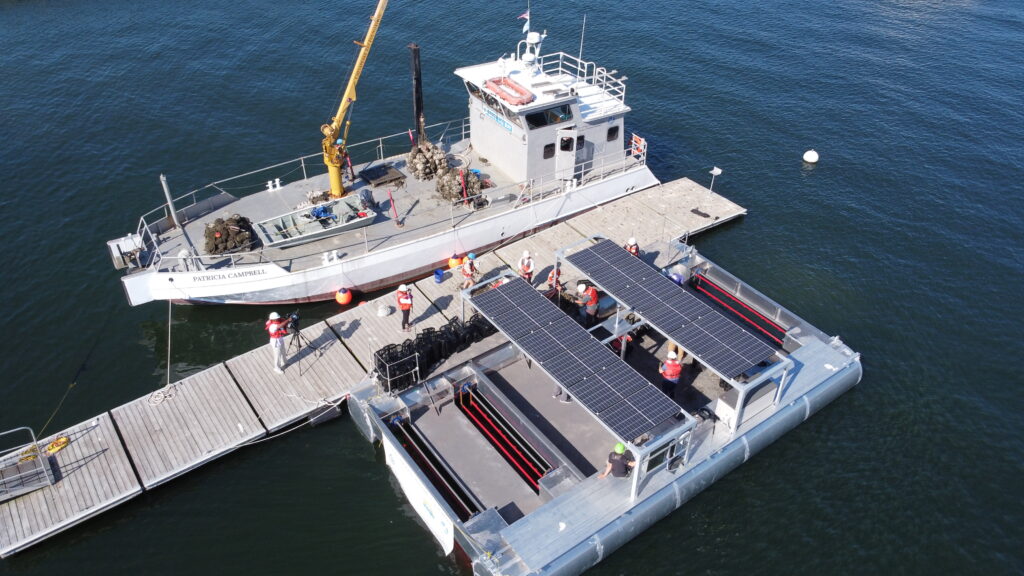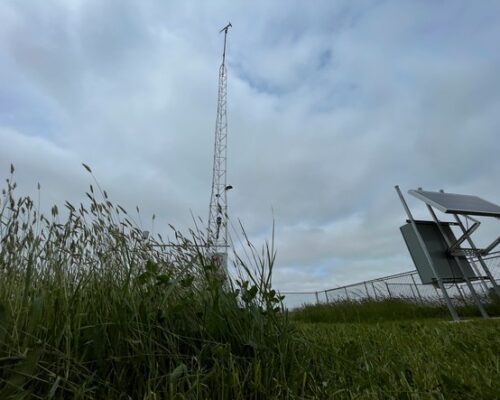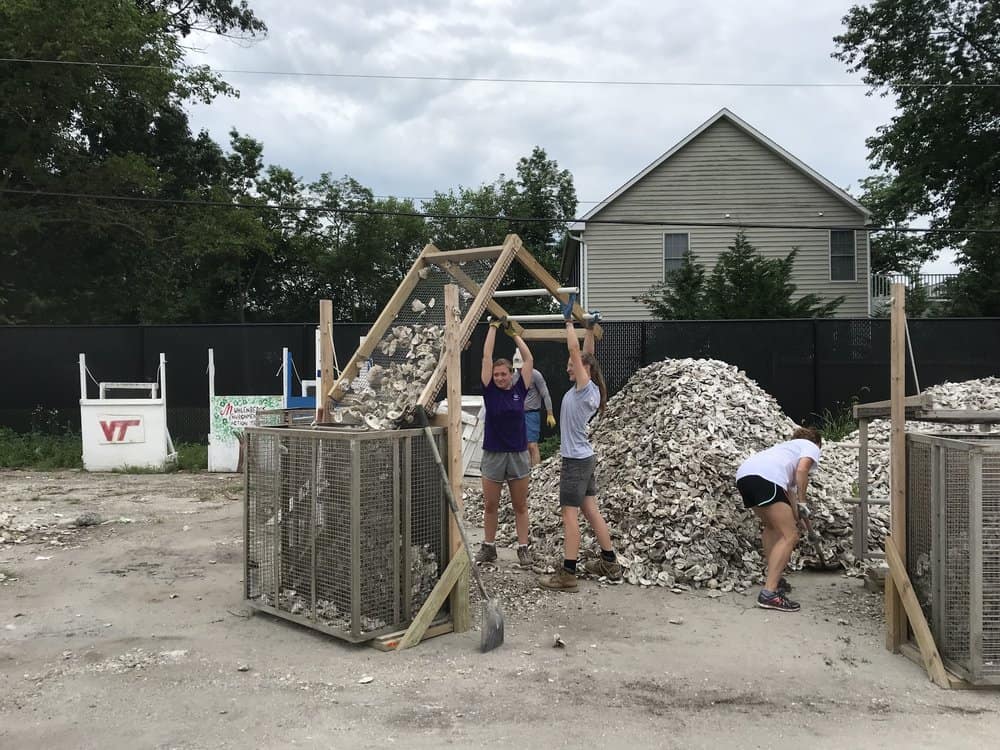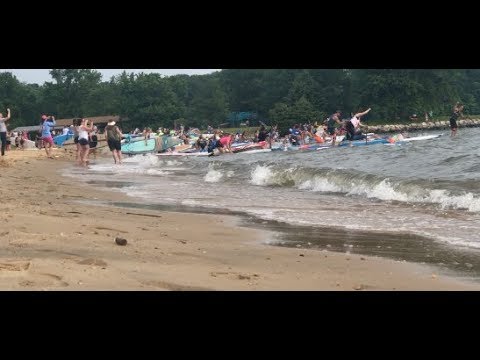Last week, the high-tech company Solar Oysters and the Chesapeake Bay Foundation (CBF) planted 356,600 oysters onto a sanctuary reef on the west side of the Patapsco River’s Fort Carroll. These oysters, set as larvae onto old shells in November 2022, had grown to 1.5-to-2-inch individuals clustered around their home shell in only about seven months.
Their environment for the beginning of their lives was a solar-powered Solar Oysters Production System (SOPS), which grew them in Baltimore’s Harbor near Fort McHenry at the dock of the Marine Applied Physics Corporation, a partner in Solar Oysters with the Ecologix Group. The Abell Foundation provided a two-year grant for this pilot project.
What are “solar oysters” anyway?
This new approach is made up of a 45’ by 25’ raft built onto two aluminum pontoons tied to the dock. On the raft, electricity from solar panels slowly rotates multiple flexible “ladders” of mesh tubes mounted crosswise. The ladders hang 10-20’ down in the water column with mesh bags of spat-on-shell inside. The chains turn continually, driven by solar-powered electric motors on the raft’s deck. You can see it in action in this Bay Bulletin story by Cheryl Costello, just after the company launched its setup.
The ladder design allows the growing oysters to cycle through the water column, giving them even exposure to salinity, temperature, dissolved oxygen, and the phytoplankton they feed on.
There’s an obvious advantage to oyster cages that hang stationary off a dock. In a side-by-side comparison, the SOPS oysters grew faster and showed a very high survival rate (90%). The SOPS also took up much less space on the Harbor’s surface than a comparable number of oysters in aquaculture floats would. That one small raft produced as many oysters for the Fort Carroll Reef as the dozens of CBF volunteers who tended cages spread around Baltimore Harbor over that time.
“This pilot project effectively doubles the number of oysters we can put on the sanctuary reef each year,” said Doug Myers, CBF Maryland senior scientist. “Those oysters will enable the reef to filter more water and provide additional habitat to fish, crabs, and other marine life.”
Solar Oysters will experiment on another improvement this coming year: an automated spray bar that applies high water pressure to remove oyster-fouling plants and animals.
Even though the potential of the solar oyster growing system is considerable for building up protected reefs, the greatest benefit may well come in commercial aquaculture thanks to its capacity to grow more oysters in a relatively small space while reducing labor. Experiments with oysters grown for market in the SOPS show high survival, fast growth, and beautifully cupped shells, a byproduct of the tumbling action induced by rotation of the cages.
Solar Oysters is talking with growers in both Maryland and Virginia about experimenting with SOPS at commercial scales. Bay Bulletin will keep an eye on this developing story.
-John Page Williams




